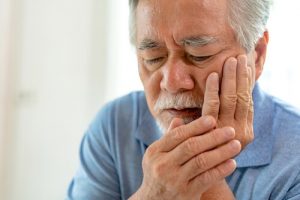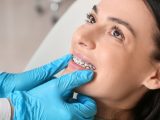
Pimple-Like Bump on Roof of Mouth: What Could It Be?
2024-06-14Contents
Noticing a pimple-like bump on the roof of the mouth can be a source of curiosity and concern. Such bumps can appear for various reasons, ranging from benign cysts to potential infections. But what exactly causes these mysterious bumps, and when should you start worrying? Join us as we delve into the possible culprits behind this common yet perplexing condition, providing you with the knowledge to understand and address your symptoms effectively. Stay tuned for an in-depth exploration to illuminate this intriguing topic.
Common Causes of Pimple-Like Bumps in the Mouth
Discovering a pimple-like bump in the mouth can stir concern, prompting questions about its origin. Such bumps can arise from various causes, varying widely in severity from harmless to potentially serious conditions. An in-depth understanding of these causes alleviates worries and guides effective management strategies.
Canker Sores:
Also known as aphthous ulcers, canker sores are small, painful ulcers that typically appear on the mouth’s soft tissues or at the gums’ base. Unlike cold sores, they are not contagious and often emerge due to stress, minor mouth injuries, yeast infections, or acidic foods.
Cold Sores:
The major cause of this condition is herpes simplex virus type 1, herpes simplex blisters are contagious, painful blisters that form around the lips and occasionally under the nose or chin. Factors like stress, sunlight, or fever can trigger recurrences.
Mucoceles:
Often resulting from trauma, such as biting or sucking the lip, mucoceles are soft, round cysts that can form on the inner surface of the lips or under the tongue. They are filled with mucus due to a ruptured or blocked salivary gland duct.
Oral Candidiasis (Thrush):
This fungal infection presents as milky white sores on the tongue, inner cheeks, and occasionally on the gums, tonsils, or the palate. It typically affects those with compromised immune systems, infants, and the elderly, frequently resulting from an imbalanced bacterial flora.
Squamous Papilloma:
This benign tumor, caused by the human papillomavirus (HPV), has a bumpy, cauliflower-like texture. It is usually painless and appears on the tongue, lips, or inside the cheeks.
Epstein Pearls:
These small, white cysts are harmless and seen in newborns. They occur when skin cells get trapped during mouth development and typically disappear a few weeks after birth.
Fibroma:
This benign oral mass is a dense, fibrous tissue tumor that can develop in response to irritation such as chronic biting. Fibromas are generally non-cancerous and appear as smooth, pink growths that are firm to the touch.
Symptoms That Accompany Pimple-Like Bumps
Pimple-like bumps in the mouth often present with various accompanying symptoms that can explain their underlying cause. Knowing these symptoms is crucial for determining the nature of the bump and deciding when to seek professional advice.
Pain and Discomfort:
Many oral bumps, such as canker sores and mucoceles, are often painful or cause significant discomfort, especially when eating, drinking, or speaking.
Redness and Swelling:
Inflammatory responses can lead to redness and swelling around the bump, whether from infection or irritation. This is common in conditions like oral candidiasis or when a bump is infected.
Bleeding or Exudate:
Bumps caused by trauma or infection may bleed or ooze a clear or yellowish fluid, signaling that there might be more extensive damage or an active infection.
Secondary Symptoms:
Depending on the cause, other symptoms may include fever (indicating systemic infection), a bad taste in the mouth (often associated with abscesses or gum disease), or a general feeling of malaise.
Altered Taste Perception:
Infections like oral thrush can leave a cottony feeling in the mouth, which may alter taste perceptions, making food taste different or unpleasant.
Difficulty Swallowing or Speaking:
Larger bumps, or those located in critical areas of the mouth, like the back of the throat or along the tongue, can hinder normal swallowing and speech.
When to Consult a Healthcare Professional

While many pimple-like bumps in the mouth and sore throat are benign and may resolve independently, certain signs and symptoms seek a consultation with a healthcare professional. Recognizing these indicators can ensure timely and appropriate medical intervention, preventing potential complications.
Persistence or Worsening of Symptoms: If a bump persists for more than two weeks without any signs of improvement, or if the symptoms worsen, it’s crucial to seek medical advice. Persistent bumps may require further investigation to rule out more serious conditions.
Pain that Interferes with Daily Activities: If the pain from the bump is severe enough to interfere with eating, drinking, or speaking, professional assessment and treatment may be necessary.
Signs of Infection: Symptoms such as increasing redness, swelling, warmth around the bump, pus or other discharge, fever, or a foul taste could indicate an infection that needs medical treatment.
Multiple Bumps or Recurring Episodes: The appearance of multiple bumps or recurrent episodes of bumps may suggest an underlying health issue that requires diagnosis and management.
Difficulty Swallowing or Breathing: Bumps that cause significant swelling to the extent of impaired swallowing or breathing should be treated as emergencies. Immediate medical attention is necessary.
Unexplained Weight Loss or Fatigue: If bumps in the mouth are accompanied by other systemic symptoms, such as unplanned weight loss or persistent fatigue, they could be signs of a more serious underlying condition.
Diagnostic Techniques for Oral Bumps
Accurately diagnosing the cause of pimple-like bumps in the mouth is crucial for determining the appropriate treatment path. Healthcare professionals employ various diagnostic techniques to thoroughly assess these bumps, ensuring a precise understanding of their nature and underlying causes. This detailed diagnostic process often begins with non-invasive methods and may progress to more specialized tests depending on the initial findings.
Visual Examination:
- Comprehensive Inspection: A dentist or oral health specialist conducts an in-depth visual examination to assess the bump’s appearance—its size, shape, color, and exact location. This step often includes looking for associated signs such as asymmetry, discoloration, or unusual texture that may indicate specific conditions.
- Symptom Assessment: The presence of accompanying symptoms like redness, swelling, or bleeding can provide clues about potential inflammatory or infectious processes.
Palpation:
- Tactile Evaluation: The professional may gently palpate the bump with gloved hands to evaluate its consistency and mobility. This helps differentiate between cystic lesions, solid tumors, or fluid-filled areas.
- Sensitivity Testing: Checking for pain or discomfort upon pressure can also give insights into the bump’s origin, indicating whether it might be an acute abscess or a more chronic condition.
Dental X-rays:
- Structural Imaging: X-rays reveal hidden structures within the mouth, such as impacted too many teeth, underlying bone deformities, or deep-rooted infections that aren’t visible externally.
- Diagnostic Clarity: These images help identify calcifications or foreign bodies that might contribute to the formation of the bump.
Biopsy:
- Tissue Sampling: A biopsy is essential if there’s a suspicion of malignancy or other serious pathology. Removing a small piece of the bump’s tissue allows for detailed laboratory analysis to determine if cancerous cells are present.
- Histological Examination: A pathologist examines the sample under a microscope and assesses the cell types, arrangement, and other characteristics critical for a definitive diagnosis.
Microbial Cultures:
Infection Identification: When an infection is suspected, swab samples from the bump may be cultured to identify bacteria, fungi, or viruses, clarifying the infectious agent and guiding antimicrobial treatment choices.
Blood Tests:
Systemic Indicators: Comprehensive blood panels can reveal signs of systemic infection, inflammation, or autoimmune markers that might be linked to the oral symptoms, providing a broader context for the diagnosis.
Allergy Testing:
Identifying Reactivity: When an allergy is suspected, specific tests can determine the patient’s sensitivity to allergens. This is particularly useful if the bump appears to be a reaction to dental materials, foods, or environmental factors.
Treatment Options for Pimple-Like Bumps



Effective treatment of pimple-like bumps in the mouth hinges on accurately pinpointing their underlying causes. These bumps can arise from various issues—from infections and allergic reactions to physical irritations or systemic health problems. Each cause demands a specific treatment strategy, carefully chosen to treat both the symptoms and the root cause, ensuring optimal healing and prevention of recurrence.
Medications:
Depending on the cause, different medications may be prescribed:
- Antifungals for fungal infections like oral thrush.
- Antivirals for viral infections such as herpes simplex.
- Antibiotics for bacterial causes, particularly in cases of dental abscesses.
- Pain relievers and anti-inflammatory drugs can subside discomfort and reduce inflammation, making daily activities more manageable.
Dental Procedures:
Specific dental issues require targeted interventions:
- Root canal therapy is performed if the bump is due to an infection in the tooth’s pulp.
- Tooth extractions may be needed for severely damaged teeth, which cause gum swellings.
- Professional cleaning can help manage and prevent bumps caused by gum disease.
Laser Therapy:
This modern treatment option offers precision in removing benign tumors or persistent lesions, with benefits including reduced bleeding and faster healing times.
Cryotherapy:
Employing extreme cold to freeze and destroy abnormal tissue is particularly effective for treating viral bumps, such as those caused by HPV, minimizing the risk of their spreading or recurring.
Home Remedies:
These are beneficial for less severe conditions:
- Saltwater rinses help cleanse the mouth and reduce bacterial load.
- Baking soda applications can neutralize acids in the mouth, promoting healing.
- Topical pastes made from ingredients like magnesia milk can cover the bump, protecting it from further irritation.
Dietary Adjustments:
Eating soft, non-irritating foods can prevent further bump irritation. Avoiding hard, spicy, or acidic foods can significantly reduce discomfort and promote healing.
Enhanced Oral Hygiene Practices:
Maintaining excellent oral hygiene is critical:
- Regular brushing and flossing get rid of food particles and plaque, reducing the risk of bumps.
- Antiseptic mouthwashes can control bacterial growth and soothe inflamed tissues in the mouth.
Preventive Measures to Avoid Oral Bumps
Preventing oral bumps involves a strategic combination of diligent oral hygiene, thoughtful lifestyle choices, and consistent preventative care. By integrating comprehensive practices into daily routines, individuals can effectively mitigate the risk of developing various oral bumps, ensuring oral health and overall well-being.
Maintain Excellent Oral Hygiene:
- Brushing: Brush your teeth with a soft toothbrush and fluoride toothpaste. This helps remove plaque and prevent bacteria buildup leading to oral bumps.
- Flossing: Daily flossing detaches food particles and plaque collected between teeth and along the gum line that a toothbrush can’t reach.
- Mouthwash: Rinsing with an antiseptic mouthwash once or twice a day can help reduce bacteria, decrease gum disease risk, and flush out debris that could cause irritation or infection.
Regular Dental Visits:
- Schedule cleanings and check-ups every six months to catch and address dental issues like cavities and gum disease early, before they cause problems.
- Discuss any concerns with your dentist, such as canker sore or areas of irritation, for personalized preventive advice.
Healthy Diet:
- Nutrient-rich foods: Incorporate plenty of fruits, vegetables, and whole grains that provide the nutrients necessary for maintaining strong teeth and healthy gums.
- Avoid Problematic Foods: Limit sugary, acidic, and extremely hard foods that can damage teeth and irritate the mouth, potentially leading to bumps.
Avoid Tobacco Products:
- Smoking and other forms of tobacco use are associated with a higher risk of oral cancer, gum, and mouth disease, both of which can cause bumps in the mouth. Seeking help to quit can significantly reduce these risks.
Manage Stress:
- Chronic stress can lead to habits like cheek biting or teeth grinding, which may cause bumps. Techniques like yoga, meditation, and regular physical activity can effectively manage stress.
Use Dental Protection:
- Wearing a mouthguard during practicing sports or other physical activities can protect against injuries to the teeth and gums and prevent bumps caused by trauma.
Careful Eating Habits:
- Avoid biting into very hard foods such as candies or ice, and be cautious with extremely hot foods, as both can cause immediate damage to oral tissues.
If you discover a pimple-like bump on the roof of your mouth, it’s important not to panic but to observe it. While these bumps are often harmless, monitoring and discussing any changes in oral cavity with your healthcare provider can help ensure they are addressed properly. Stay informed about your oral health to avoid such concerns and maintain your well-being.
References
Bump on the roof of the mouth: 12 causes – MedicalNewsToday
https://www.medicalnewstoday.com/articles/323063#:~:text=There%20are%20many%20causes%20of,the%20cause%20may%20be%20cancer.
Oral Mucocele – Mucous Cyst: Symptoms, Causes & Treatment
https://my.clevelandclinic.org/health/diseases/23406-oral-mucocele#:~:text=An%20oral%20mucocele%20is%20a,lip%20cause%20most%20oral%20mucoceles.
12 Causes of a Bump on the Roof of Your Mouth
https://www.healthline.com/health/bump-on-roof-of-mouth
8 Causes of a Bump on the Roof of the Mouth
https://www.verywellhealth.com/bump-on-roof-of-mouth-7485560
Sore On The Roof Of Your Mouth? Four Possible Causes
https://www.colgate.com/en-us/oral-health/mouth-sores-and-infections/sore-in-roof-of-mouth-causes

